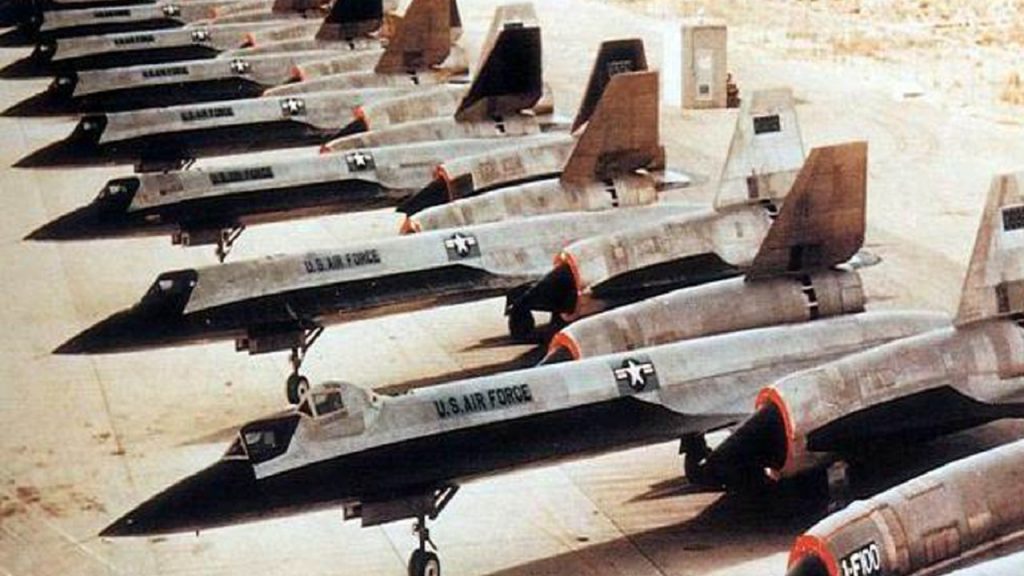The Soviets wouldn’t stop it. The objective was to turn the CIA’s A-12 Oxcart espionage plane into a fighter or bomber. During the 1961 Vienna Summit between President John F. Kennedy and Soviet Union Premier Nikita Khrushchev, the U.S. Air Force seriously considered these ideas. The concept is

The Soviets wouldn’t stop it. The objective was to turn the CIA’s A-12 Oxcart espionage plane into a fighter or bomber. Following the Vienna Conference between President John F. Kennedy and Soviet Union Premier Nikita Khrushchev, the U.S. Air Force took these ideas seriously. A known Air Force vice chief of staff, Curtis LeMay, came up with the concept. LeMay believed the Oxcart could travel far into the Soviet Union undetected on its bombing run.
Like many other members of the American military, LeMay was preoccupied with the prospect of a third world war. Air Force war strategists were racking their brains to gain an advantage over the Russians. After a nuclear exchange, LeMay wants to be more firepower- and survival-oriented.
He was also interested in the CIA’s A-12 Oxcart. It may be the launching pad for a bomber that could fly over Moscow and possibly destroy the Kremlin in a single flight.
LeMay also thought that if the U.S. ever used nuclear bombs against the Soviet Union, an extra seat could be added to the A-12 so that a reconnaissance officer could check the damage done by the bombs
and did not entirely fulfill LeMay’s wishes. The YF-12A experimental fighter interceptor was created as a result of his ideas. With a ceiling of 80,258 feet, this predecessor to the SR-71 Blackbird flew at 2,070 miles per hour in 1965.
Any Soviet supersonic fighter that could breach U.S. airspace and launch an attack on the homeland was to be intercepted by the YF-12A. Three air-to-air missiles and a weapons officer were equipped with the YF-12A. In 1963 and 1964, only three were constructed.
The YF-12 was used by NASA until 1979 but not by the military.
The XB-70 Valkyrie was another aircraft comparable to the A-12 Oxcart that was anticipated to be incredibly fast and capable of flying at exceedingly high altitudes. The XB-70 was designed to carry nuclear missiles across the Soviet Union. At 73,000 feet, the aircraft could fly at Mach 3.1.
The Air Force only purchased two for testing purposes, and the maiden flight took place in 1964. After a mid-air collision in 1966, one of them blew up. The Air Force was unsure of its ability to survive in the face of improved Russian aircraft and recent advancements in Soviet air defense equipment.
Discontinued The bomber program, and like the YF-12A, the final XB-70 was delivered to Wright-Patterson Air Force Base in Ohio’s National Museum of the Air Force.
Incredibly, engineers could come up with the following idea, which built was built on the A-12 Oxcart. The CIA requested that the Skunk Works team at Lockheed Martin create a recon drone that would take off from the A-12.
Remember that this was the first attempt at uncrewed flight because it was in 1962. Operation Tagboard was the CIA’s name for it.
According to TheSR71Blackbird.com, the drone was “43 feet long, weighed over five tonnes, had a ramjet engine, could achieve a speed of over Mach 3.3 at 90,000 feet, and travel over 3,000 miles.” The crewless vehicles were designed to scavenge themselves after use.
Lockheed built 38 drones. After a pilot lost his life when the mothership crashed while launching a drone, he scrapped the experiment.
The fascinating history of the A-12 Oxcart gave rise to various aircraft concepts for attack, bombing, and reconnaissance drones. The advancements required to construct the SR-71 Blackbird were made possible by all of this testing, research, and development. So, the early ideas for equipping the A-12 impacted the development of espionage planes.






